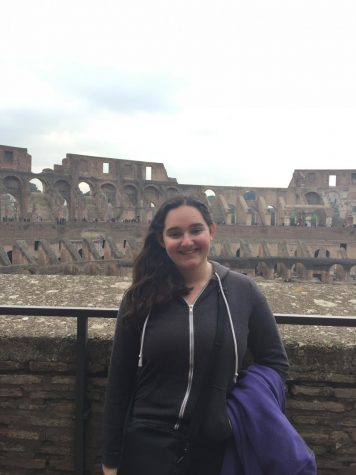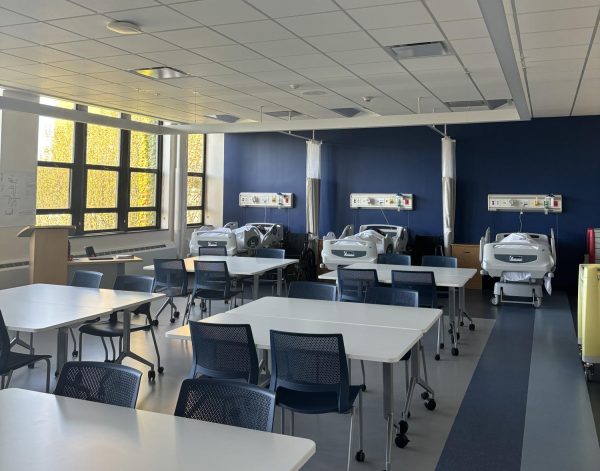New summer school class combines science and sports
February 15, 2019
This summer, ETHS will launch a new summer school class STEM in Sports as a way to assist freshmen in their preparation for biology.
The class was designed to get incoming freshmen acclimated to the school, teach general scientific concepts and inspire students to find science interesting and exciting.
“There was also a need in the summer school curriculum to get students more engaged and more interested in science before they go into their freshman year,” astronomy and physics teacher Andy Miner said. “I got really excited at this idea just because I constantly see the blend between the two as a science teacher and an athlete.”
Miner was one of the leading forces in the Science Department for creating STEM in Sports, and will be the teacher for the class. The course is open for all incoming freshmen or sophomores who will take biology or chemistry in the next school year. Students do not need to consider themselves athletic or a “science person” to take the class – any interested students may enroll.
The science department had few programs to look at for reference because STEM in Sports is a unique concept. There are some less comprehensive programs that teach science through sports, mostly for middle school, but have curricula that Mr. Miner believes neglect some of the bigger ideas.
STEM in Sports will teach the necessary reading and science comprehension skills and methods in a way that differs from traditional biology or chemistry, with a focus surrounding fitness and sports. The course will operate on a week-by-week basis. The first two weeks will be more thematic, focusing on scientific concepts with bulk sports or general exercise. Ultimately, students will have the opportunity to decide what topics they are interested in.
The course will also include an active component two days per week, in which students will be performing trials to test hypotheses two days per week such as, “What floor makes a basketball bounce the highest?” and “What are the best cleats to kick a field goal?”
“[Students will] spend a day researching, building, coming up with ideas, and then we’ll probably spend a good chunk of the next day actually going out, running these trials, experiencing it and then learning from inevitably designing probably not very great experiments, but that’s a built-in part of the courses,” Miner explained. “I want these kids to realize that science isn’t impossible, it’s really accessible.”
Summer school has a variety of functions including providing continued academic stimulation and preparing students for classes they will take the next school year.
There a variety of courses specifically geared towards incoming freshmen such as Prep to Humanities 1 English, Prep to Humanities 1 History and Prep to Geometry. About 40-50 percent of the over 1000 students who take summer school each year are freshmen.
Previously, students involved in the Steps Towards Academic Excellence (STAE) Program were required to take Prep to 1 Humanities English and Prep to Geometry Honors or Prep to Algebra 1 Honors (depending on math level) before entering high school. Starting last summer, STAE allowed students to take any class of their choosing.
“We saw then that student choice gravitated towards interesting course offerings versus the Prep courses. Prep courses were really only if you had to take it. Last year we only had one section of Prep to Humanities when we normally would have had four,” Summer School Director and science teacher Bill Farmer explained.
The summer of 2017, ETHS piloted a Prep to Biology course. Only six students enrolled, so they were combined with the dual Prep to 1 Humanities and Biology course for a more dynamic class environment. Prep to Biology was only offered during the summer of 2017 and the combo Prep to 1 Humanities and Biology will not be offered this summer.
“[Students] were kind of forced there because they needed to do summer school for something else. So we’re like, well, we have this class, but nobody really takes it and thought about what’s a way that we could really get students engaged in science,” Science Department Chair Terri Sowa-Imbo said.
Prep to Biology targeted certain students who scored between 210 and 220 on their eighth grade reading MAP test. Students need a 220 or higher to be eligible to enroll in biology, so taking Prep to Biology allowed those students who didn’t score high enough to take biology freshman year.
“There are similar aspects [between Prep to Biology and STEM in Sports], it will still be skills based. So we’re still looking at the graphing, reading scientific texts…the content in what they’re doing will be different,” Science Department Chair Terri Sowa-Imbo said.
Contrary to Prep to Biology, interest in STEM in Sports has been high. Within the first two weeks of summer school registration opening, one section of summer school maxed out and fifteen of the twenty-four slots in the other section were filled.
“My short term goal is to just make a class in the next few years that’s succinct. It makes sense that kids are able to enjoy it, but also when they leave they see the connection between science, most of the things that they do in a given day, but specifically to athletics and sports,” Miner said,. “I want [students] to feel comfortable sitting in a science classroom and seeing these words and hearing these terms and sort of just have a set of skills that they learned in engaging way that they can take forward.”


















